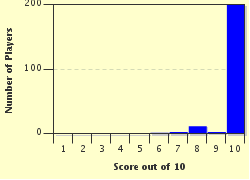Quiz Answer Key and Fun Facts
1. Famous nurse who served in Crimean war.
2. Famous WW2 Prime Minister
3. First English astronaut.
4. Famous Elizabethan privateer.
5. Renowned English ballerina
6. Author of "Oliver Twist".
7. Singer who recorded the albums, "19","21" and "25".
8. Architect of St. Paul's Cathedral.
9. Famous English queen, known as the "Virgin Queen".
10. English scientist, famed for his findings on gravity.
Source: Author
mcsurfie
This quiz was reviewed by FunTrivia editor
bloomsby before going online.
Any errors found in FunTrivia content are routinely corrected through our feedback system.


